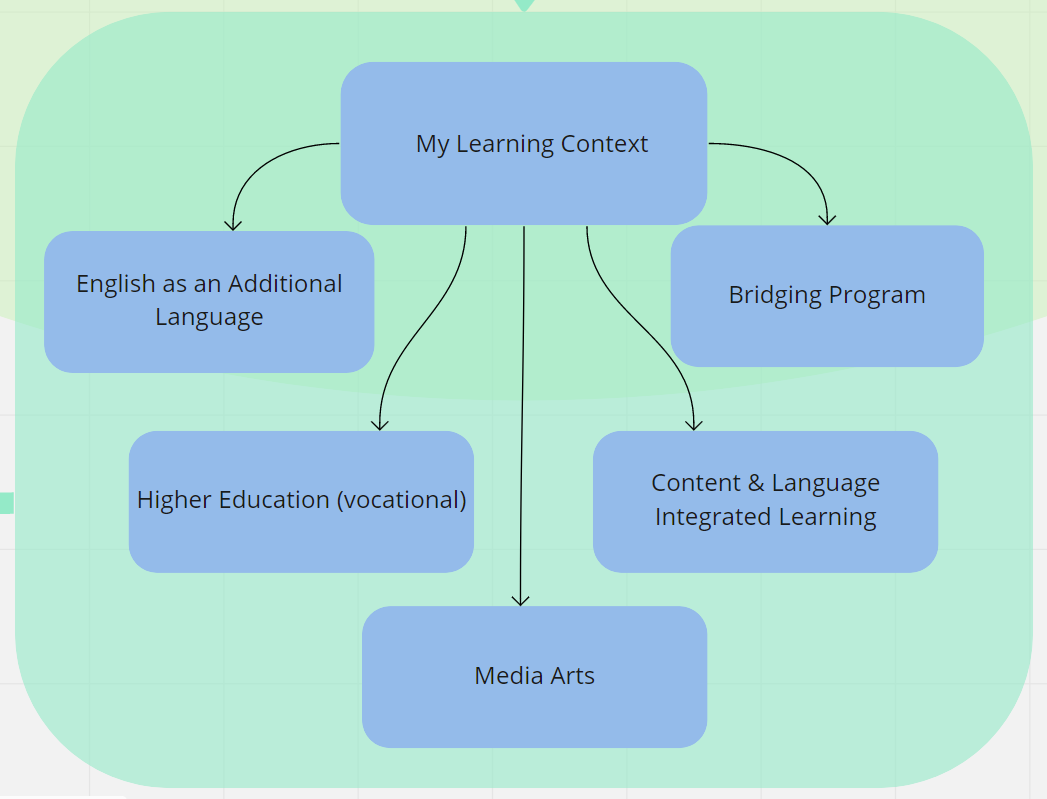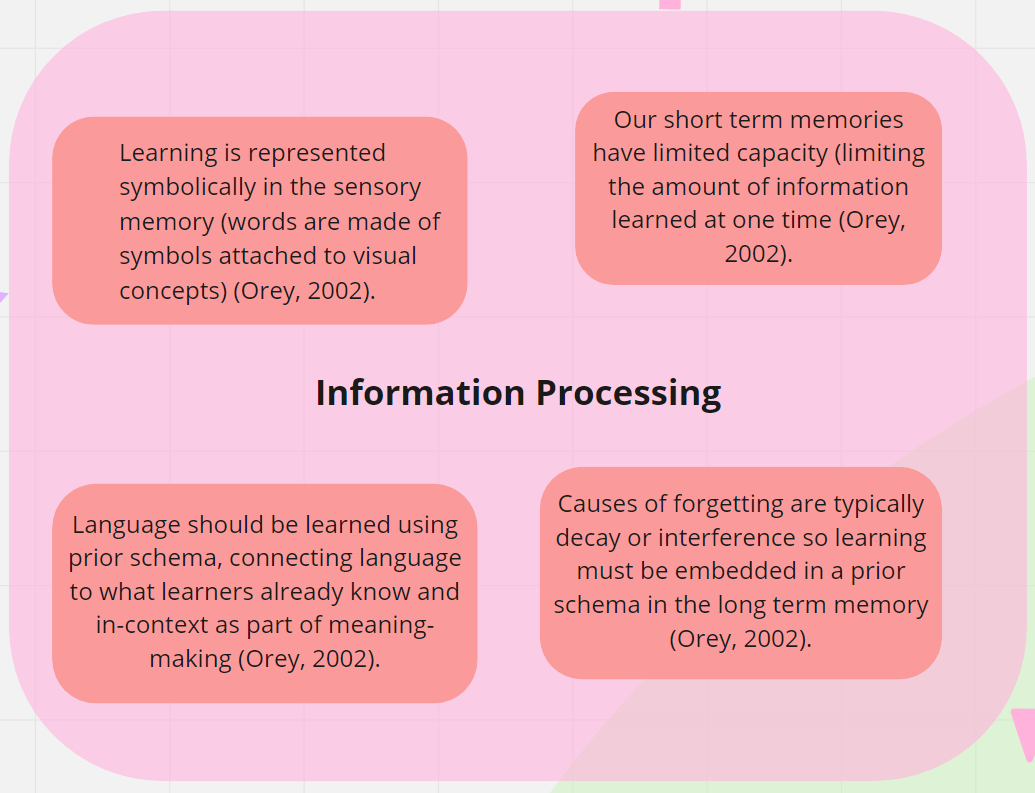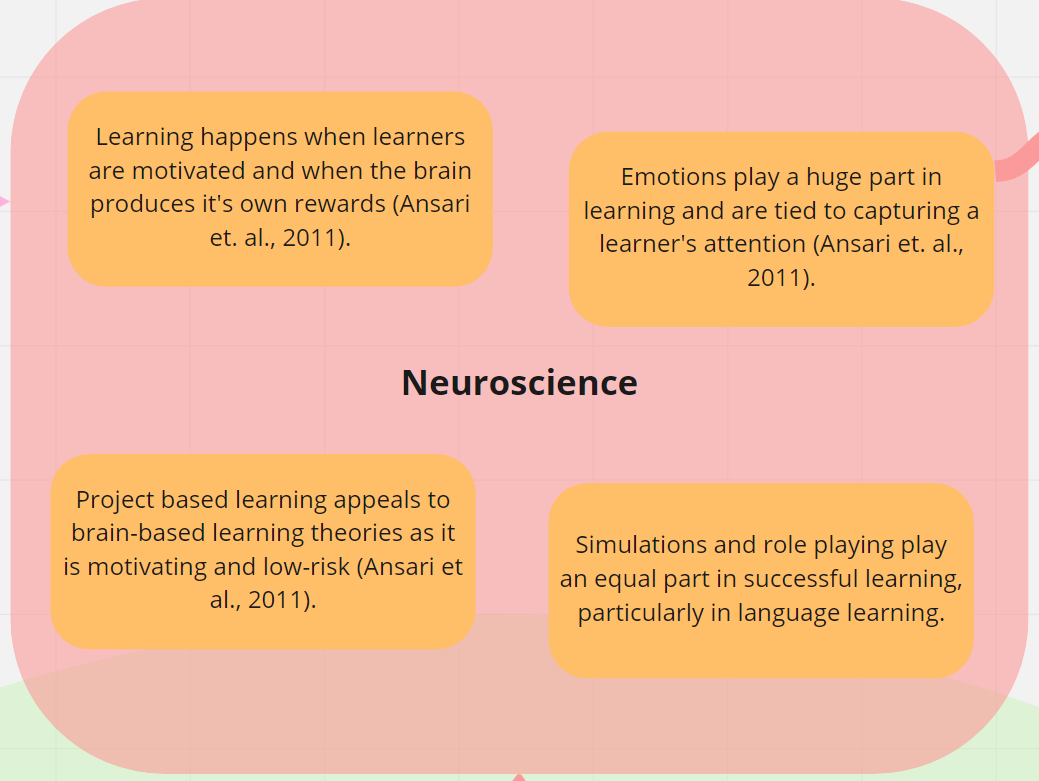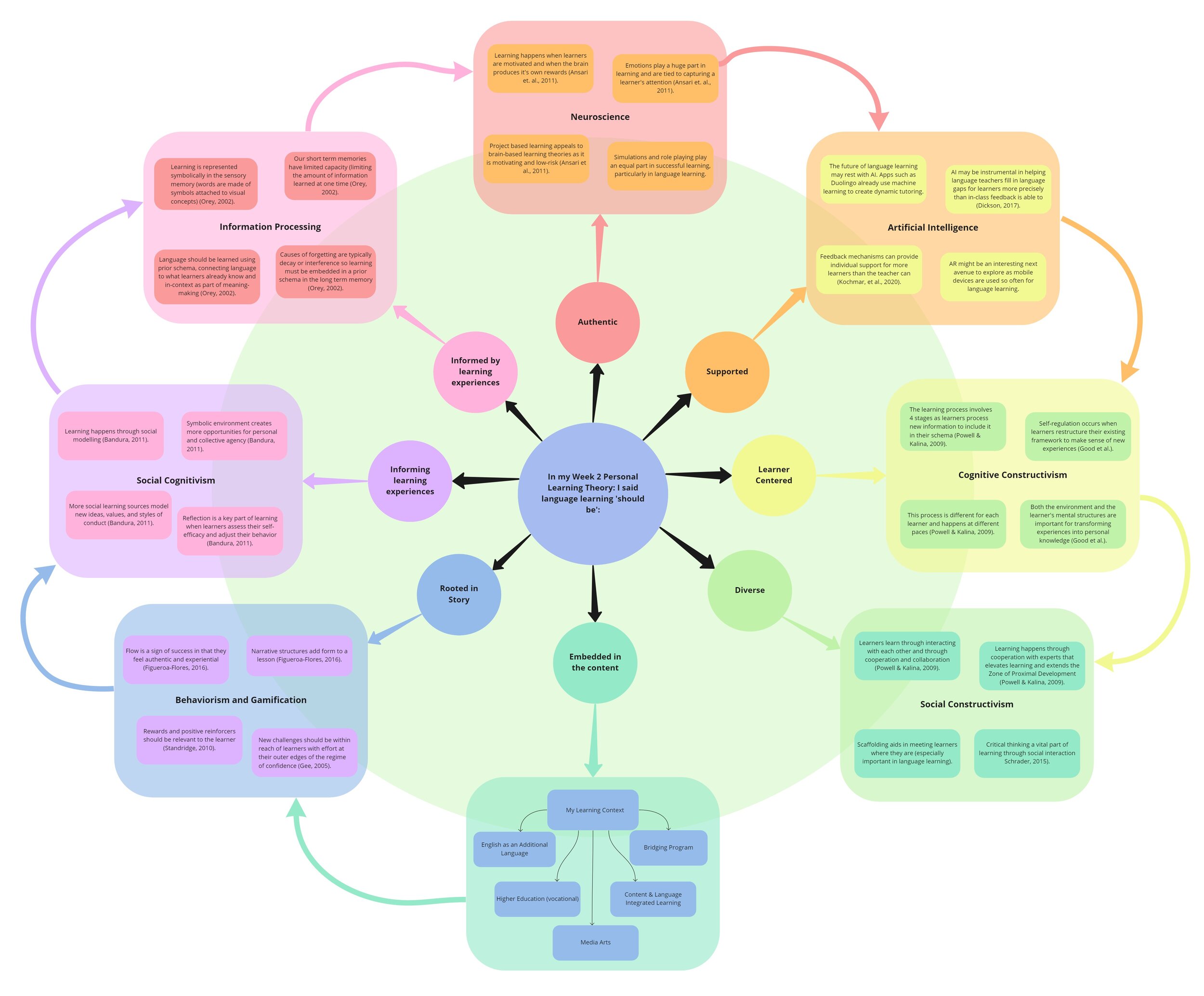The brief.
As this course provided information about so many learning and instructional design theories, one of our assignments was to construct a concept map visualizing how they built on each other and were connected. We were encouraged to look at our own perspective on learning theory and teaching to synthesize how we made sense of the information in the course content, virtual learning conference presentations on learning theory, and weekly discussion forums.
My concept map.
I again decided to try Miro for my concept map. So far in the MET program I’d used it twice with mixed results. This time, I learned from my past attempts and created a much cleaner, understandable graphic. I used color theory to create the impression of a spectrum for the theories and was inspired by the shape of an atom in the form of the graphic. Below is the entire graphic, with each description to follow.








The takeaways.
It’s always amazing to look back and see how much a single course can teach you. The concept map, in combination with the learning scenario analysis, really show how much learning theory underpins my learning design choices. Some theories resonated because I had been unwittingly using them in my course designs without being able to name them, others resonated because they offered a new perspective I hadn’t yet considered.
In future, I’d to learn more about brain-based learning and what neuroscience has to say about how we learn. I’m particularly interested in how neuroscience reinforces what we know about other learning theories and instructional design models like Universal Design for Learning (UDL) and Culturally Responsive Pedagogy. I think there are connections to be made between neuroscience and theory that can lend some support to less well-known theories.
Finally, I was always interested in gamification but now I can see connections between learning theory and how games help learners to learn beyond adding elements of ‘fun’. In fact, gamifying learning might not have much to do with ‘fun’ but rather with how the learning is structured and how it can be organized to gradually challenge students and encourage motivation. Using elements gamification for the structure of learning experiences is something I’ll continue to explore.
